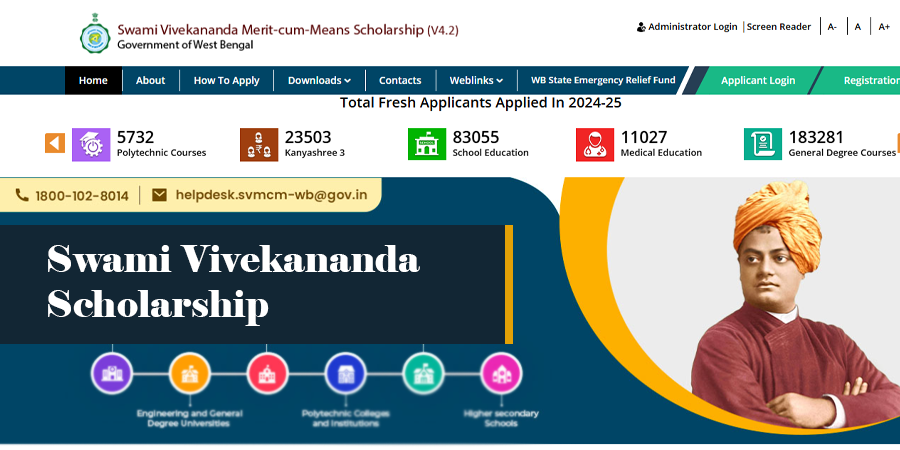A few years ago, online classes were seen as just a temporary solution during the lockdown. But now, in 2025, online learning has become a big part of how students in India study and grow.
The future of online learning in India in 2025 is bright, innovative, and more accessible than ever. With the rise of AI-powered learning, regional language content, and hybrid models, students across the country can access quality education from anywhere. The government is also supporting online education, making it easier and more affordable for everyone.
This blog explains how online education is changing in India, the latest trends like AI, game-based learning, and short video lessons. It also talks about the benefits, government help, and what students can expect in the future of online learning.
Rise of Online Learning In India In 2025
The Indian online education market is expected to reach $7.57 billion in revenue by 2025. This huge growth is happening because more people are using the internet, and students now prefer flexible, affordable learning options. Platforms like BYJU’S, Unacademy, and government portals like SWAYAM are helping lakhs of learners study anytime, anywhere.
We’re also seeing a rise in UGC-approved online degree programs, more students choosing distance MBA courses, and a big increase in low-cost or free online classes. All of this is making education more open, inclusive, and future-ready for Indian students.
Benefits OF Online Education
- Flexible Learning: Students can study anytime and anywhere, without the need to travel or follow strict schedules.
- Affordable Options: Online courses are often cheaper than traditional classes, and many free courses are available, making education accessible for all.
- Access to Expert Teachers: Learners get the chance to study with top educators and use high-quality materials from across India and around the world.
- Learn at Your Own Pace: Students can pause, rewind, and revisit lessons to fully understand the concepts, making learning less stressful.
- Wide Variety of Courses: From school subjects and competitive exam preparation to professional skill development, there are courses for every need.
- Recognized Certificates and Degrees: Many online courses offer certificates and degrees approved by universities and regulatory bodies like the UGC.
- Convenient for All: Especially beneficial for students in remote areas, working professionals, and those balancing studies with other responsibilities.
The Future Of Online Learning In India
Online learning in India isn’t just rising, it’s completely changing the way we study. With more students and working professionals choosing digital education. 2025 is set to bring big upgrades. From AI-powered tutors to game-like study methods, online learning is becoming smarter and more interactive nowadays, and job-focused.
Here’s the breakdown of popular trends of online learning and its predictions for 2025:
1. AI & Machine Learning (ML): Smarter, Personalized Learning
Artificial Intelligence (AI) and Machine Learning (ML) are changing how students learn online. These technologies help create personalized learning experiences that match each student’s needs and pace. Instead of one-size-fits-all lessons, AI can suggest topics you need to focus on or skip ones you already know well.
For example, AI-powered apps can analyze your performance and give you extra practice on difficult topics. This makes learning more efficient and helps students improve faster. Many online platforms in India are now using AI to make classes smarter and more interactive.
2. Game-Based Learning: Learning That Feels Like Play
Game-based learning is becoming very popular in online education. It uses fun games and quizzes to help students learn better. Instead of just reading or listening, students get involved by playing, solving puzzles, and completing challenges. This kind of learning keeps students interested and motivated because it feels like playing, not studying. It also helps improve skills like problem-solving, critical thinking, and teamwork.
3. AR & VR: Learning That Feels Real
Augmented Reality (AR) and Virtual Reality (VR) are bringing a new level of excitement to online learning. These technologies create virtual classrooms and 3D environments where students can explore subjects like science, history, or geography more interactively.
For example, with VR, you can take virtual field trips to historical places or inside the human body, making learning more real and easier to understand. AR can add digital layers to textbooks or videos, helping students see things in 3D.
4. Microlearning: Short & Sweet Lessons
Microlearning means studying in small, easy-to-understand parts. Instead of long lectures or books, lessons are broken into short videos or quick activities that take just a few minutes.
This style helps students focus better and remember things longer because the lessons are simple and not overwhelming. It’s perfect for busy students or those who get distracted easily.
5. Learner-Generated Content: Students Helping Students
Microlearning means studying in small, easy-to-understand parts. Instead of long lectures or books, lessons are broken into short videos or quick activities that take just a few minutes.
This style helps students focus better and remember things longer because the lessons are simple and not overwhelming. It’s perfect for busy students or those who get distracted easily.
6. Micro-Credentials: Fast-Track Your Career
Microlearning means studying in small, easy-to-understand parts. Instead of long lectures or books, lessons are broken into short videos or quick activities that take just a few minutes.
This style helps students focus better and remember things longer because the lessons are simple and not overwhelming. It’s perfect for busy students or those who get distracted easily.
7. Hybrid Learning: The Best of Both Worlds
Hybrid learning mixes online flexibility with in-person workshops and Q&A sessions. So, you get the freedom of digital learning without missing out on face-to-face discussions.
In India, many colleges are adopting hybrid learning to offer the best experience. It helps students who want to save travel time but also enjoy face-to-face interaction with teachers and classmates.
8. Regional Language Courses: Learning in Your Own Language
Learning in your own language makes understanding easier and faster. In India, many online platforms are now offering courses in regional languages like Hindi, Tamil, Bengali, Marathi, and more.
This helps students from rural and non-English-speaking areas get better access to quality education. It also makes online learning more inclusive and comfortable for everyone.
9. Government Support: More Accessibility & Affordability
The Indian government is pushing online learning big time with platforms like SWAYAM, Diksha, and e-Vidya. Expect better internet access, scholarships, and policies that make online education cheaper and easier for students across India.
Predictions for online learning in 2025
- AI-Powered Personalized Learning – AI tutors will assist students by providing customized study plans and real-time doubt-solving.
- Recognition of Online Degrees – More universities will offer full-fledged UGC-approved online degrees, making them widely accepted.
- Rise of Hybrid Learning – Colleges and coaching institutes will integrate online and offline learning for better flexibility.
- Expansion of Regional Language Courses – More online courses will be available in Hindi, Tamil, Marathi, and other regional languages.
- Focus on Skill-Based Learning – Short-term courses and certifications will become more valuable for job placements than long degrees.
- Growth of AR & VR in Education – Virtual labs and 3D learning environments will make studying more immersive and practical.
- Increased Government Support – The government will improve digital education access through better internet connectivity and free courses.
- Shift to Microlearning – Long lectures will be replaced by short, engaging lessons for better retention and convenience.
- Stronger Industry Tie-Ups – Companies will collaborate with online platforms to train and directly hire students.
Future of Online Learning – By 2025, online education will be more flexible, affordable, and career-focused than ever.
Government Policies & Support for Online Learning
- UGC-approved online degrees
The University Grants Commission (UGC) has officially recognized online degrees from top universities, meaning students can now earn valid degrees without attending physical classes.
- SWAYAM & other government initiatives
Platforms like SWAYAM, Diksha, and e-Vidya are making quality education accessible for free. These platforms offer courses from top Indian institutes, helping students and professionals upskill without spending a fortune.
- Stronger digital infrastructure
The government is working on improving internet access in rural areas, ensuring students from smaller towns and villages can benefit from online learning just like those in metro cities.
- Financial aid & scholarships
To encourage more students to opt for online education, the government is introducing financial aid programs and easy education loans for online courses.
- Focus on skill development
With programs like Skill India and Digital India, the government pushes for skill-based online learning. Short-term certification courses in areas like IT, AI, and digital marketing are gaining popularity, making students job-ready faster.
Government Policies & Support for Online Learning
The University Grants Commission (UGC) has officially recognized online degrees from top universities, meaning students can now earn valid degrees without attending physical classes. This has boosted the credibility of online education in India.
- SWAYAM & other government initiatives
Platforms like SWAYAM, Diksha, and e-Vidya are making quality education accessible for free. These platforms offer courses from top Indian institutes, helping students and professional’s upskill without spending a fortune.
- Stronger digital infrastructure
The government is working on improving internet access in rural areas, ensuring students from smaller towns and villages can benefit from online learning just like those in metro cities. More digital learning centers and smart classrooms are also being introduced.
- Financial aid & scholarships
To encourage more students to opt for online education, the government is introducing financial aid programs and easy education loans for online courses. This makes higher education more affordable for everyone.
- Focus on skill development
With programs like Skill India and Digital India, the government is pushing for skill-based online learning. Short-term certification courses in areas like IT, AI, and digital marketing are gaining popularity, making students job-ready faster.
Read Full Blog:- The Role Of Government In Promoting Online learning
Read More Blogs
Final Thoughts
The future of online education in India is very promising. With new technology, better internet, and strong government support, students can learn from anywhere at any time.
Online courses in many Indian languages and short lessons make learning easier for everyone. Online degrees are gaining more acceptance, and employers are recognizing their value.
Online education is becoming smarter, flexible, and accessible to all. It is no longer just an option but an important way to learn and grow in India.
FAQs
Q1. What is hybrid learning?
Ans: Hybrid learning means studying partly online and partly in a classroom.
Q2. Can online learning help in getting a job?
Ans: Yes, online courses teach useful skills that help you get ready for a job.
Q3. Are online courses available in regional languages?
Ans: Yes, many websites offer courses in Indian languages like Hindi, Tamil, Bengali, and Marathi to make learning easy.
Q4. What technology is used in online education?
Ans: Technologies like Artificial Intelligence (AI), Virtual Reality (VR), and games make learning more fun and easy.
Q5. How does government support help online education?
Ans: The government offers free courses, better internet in villages, scholarships, and training programs to help students learn online.


















